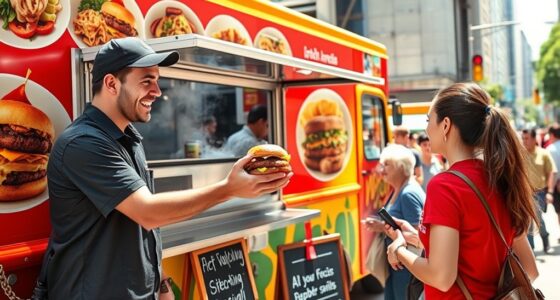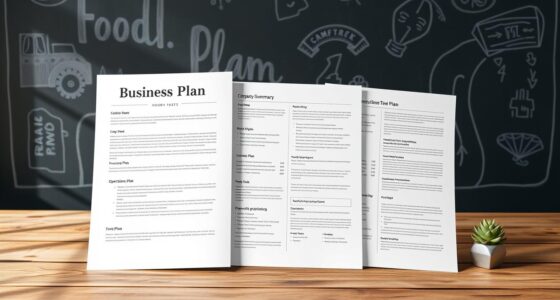To set up your first food truck taste test, start by designing a menu with unique, appealing flavors and attractive presentation. Pick high-traffic locations during peak hours, like lunch or weekends, and secure necessary permits. Promote the event through social media, influencers, and community partnerships to boost turnout. Prepare simple feedback systems to gather customer opinions and analyze responses to refine your menu and service. If you want to discover more tips, keep exploring how to make your taste test successful.
Key Takeaways
- Select high-traffic, accessible locations and optimal times, like lunch hours or weekends, to maximize attendee turnout.
- Develop a diverse, visually appealing menu with unique flavors and attractive presentation to entice customers.
- Promote the event through social media, local influencers, and community partnerships to increase visibility and engagement.
- Prepare simple, easy-to-serve samples with vibrant garnishes, ensuring they are appealing and convenient for on-the-go tasting.
- Set up feedback stations and incentivize participation to gather valuable insights for menu refinement and future improvements.
Planning Your Menu and Sampling Offerings
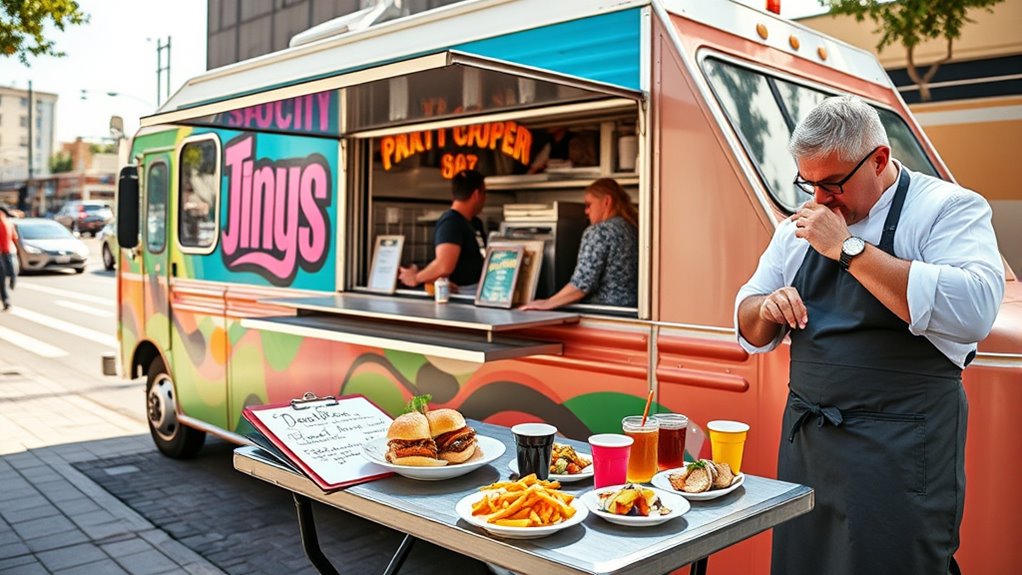
When planning your food truck menu, it’s essential to focus on offerings that showcase your unique flavors while appealing to your target customers. One key to success is skillful ingredient pairing; combine flavors that complement each other to create memorable bites. Think about how different ingredients work together in both taste and texture, enhancing each dish’s appeal. Presentation techniques also matter—use vibrant garnishes, neat plating, and eye-catching arrangements to make your offerings stand out. Keep your samples visually enticing and easy to eat on the go. Incorporating visual presentation techniques can further elevate your samples and attract more customers. For example, using colorful and creative plating can make your dishes more appealing and memorable. Additionally, understanding how to properly pair ingredients ensures that each sample delivers a harmonious flavor profile. Paying attention to kitchen aesthetics can also enhance the overall appeal of your food presentation, creating a cohesive and inviting experience. Incorporating elements of visual harmony can help achieve a balanced and attractive display that draws customers in and enhances their tasting experience. Remember, great flavor combinations paired with attractive presentation leave a lasting impression.
Choosing the Right Location and Time
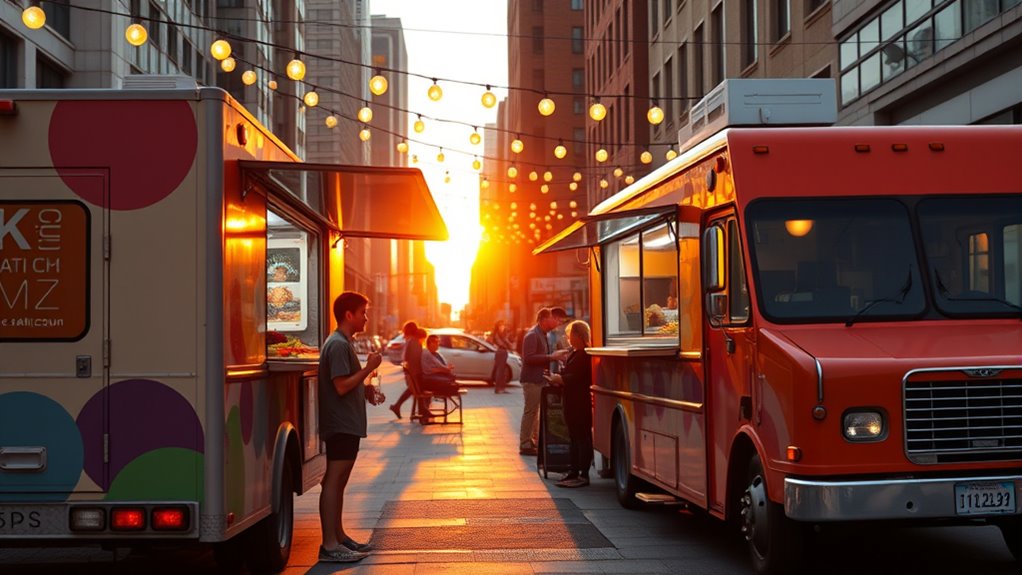
Selecting the right location and time is crucial for attracting customers and maximizing sales. First, secure the necessary parking permits to operate legally and ensure your truck is in a visible, high-traffic area. Look for spots near offices, parks, or busy streets where foot and vehicle traffic are steady. Consider weather considerations; choose a time when the forecast predicts clear, mild conditions to encourage more visitors and avoid cancellations. Avoid extreme heat, rain, or cold that might deter potential customers. Timing your event during lunch hours or weekends can also boost attendance. By carefully selecting a strategic location and ideal time, you make it easier for people to find you and enjoy your taste test, setting the stage for a successful event. Incorporating data-driven strategies can help identify the most effective locations and times based on customer engagement patterns, and understanding creative practice can inspire innovative ways to promote your event and engage with your audience. Additionally, considering automation in business can streamline your setup and operations, making your event more efficient. Being aware of essential oils for marketing may also provide subtle ways to create an inviting ambiance that attracts curious passersby. Moreover, conducting a brief market analysis of nearby competitors can give insights into the best times and spots to stand out.
Promoting Your Taste Test Event
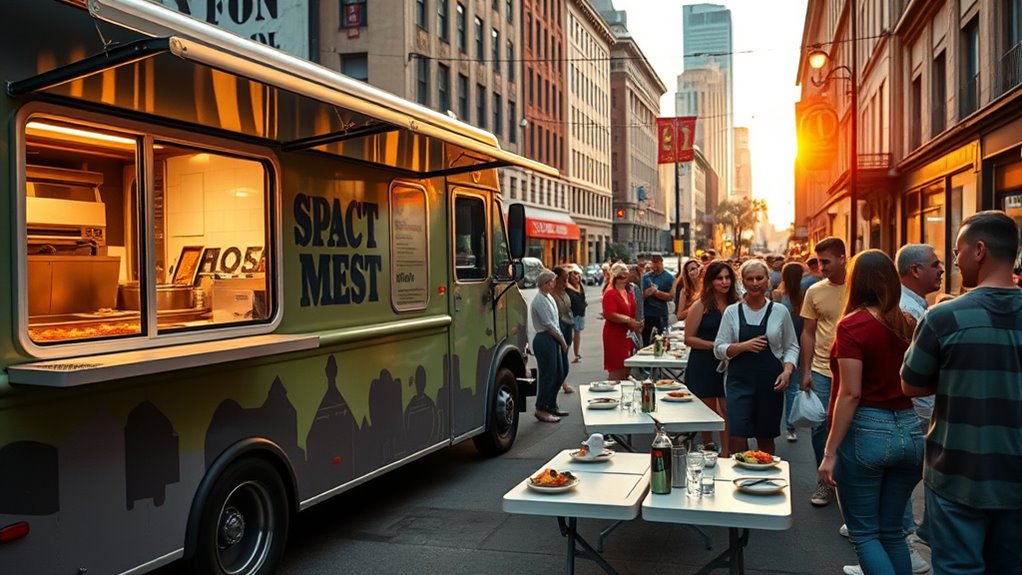
Promoting your taste test event effectively can particularly boost attendance and generate buzz. Leverage social media platforms like Instagram, Facebook, and Twitter to reach your target audience quickly. Create engaging posts with eye-catching images and clear details about the event. Use hashtags to increase visibility and encourage followers to share your content. Additionally, consider influencer outreach—partnering with local food bloggers or social media influencers can amplify your message. Invite them to try your offerings and share their experiences. Their endorsement can attract more attendees and lend credibility to your event. Keep your messaging enthusiastic and timely, and remind your followers as the event approaches. Incorporating Cultural Celebrations themes or hashtags can further connect with diverse audiences and enhance engagement. Utilizing cookie categories to tailor advertising can help you reach the right audience more effectively. Understanding audience targeting best practices ensures your promotional efforts are as effective as possible. Engaging with your community through local partnerships can also expand your reach and foster goodwill. Additionally, aligning your promotional efforts with state-specific benefits or local resources can further attract attendees and boost event success. With strategic social media efforts and influencer partnerships, you’ll maximize your event’s reach and create a memorable experience.
Setting Up for Feedback Collection
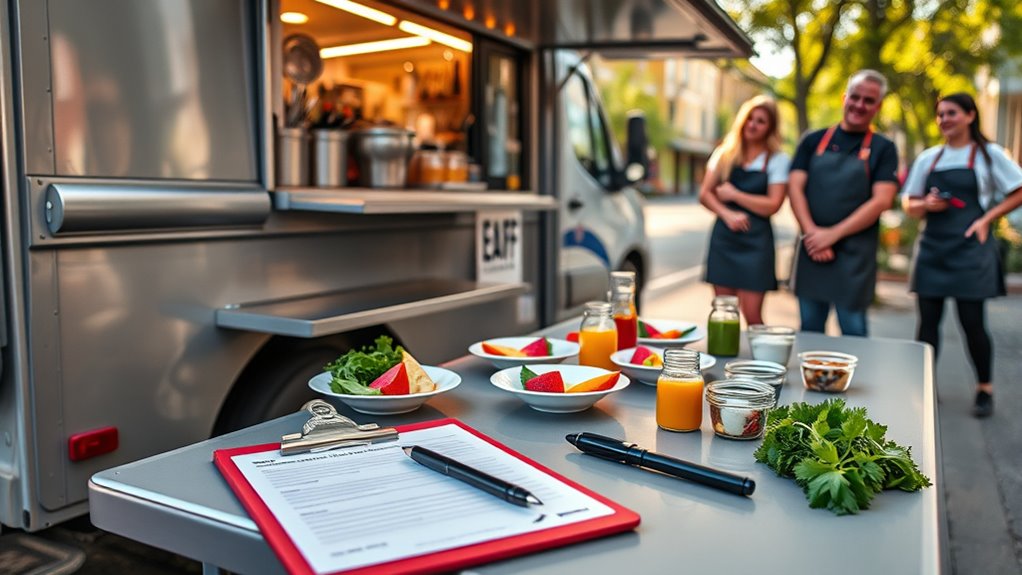
After generating buzz for your taste test event through social media and influencer partnerships, it’s important to be prepared to gather honest feedback from attendees. Setting up effective survey methods ensures you collect meaningful customer feedback. Prepare simple, quick-to-complete surveys using paper forms or digital tools like tablets or mobile apps. Keep questions focused on taste, presentation, and overall experience, avoiding complexity. Clearly position feedback stations at the event so guests can easily access them without disruption. Consider offering incentives, like discounts or small prizes, to encourage participation. Make sure staff members are trained to explain the importance of feedback and assist attendees if needed. Well-organized feedback collection helps you understand your audience’s preferences and improves future food truck offerings. Understanding spiritual energy can also help you tune into subtle cues from your customers’ reactions. Additionally, being attentive to customer responses can provide valuable insights that might not be captured through surveys alone. Incorporating non-verbal cues and body language during interactions can further enhance your understanding of customer satisfaction, especially when combined with awareness of spiritual energy and emotional responses. Recognizing regional preferences and local insights can also tailor your offerings to better meet your audience’s tastes.
Analyzing Results and Making Improvements
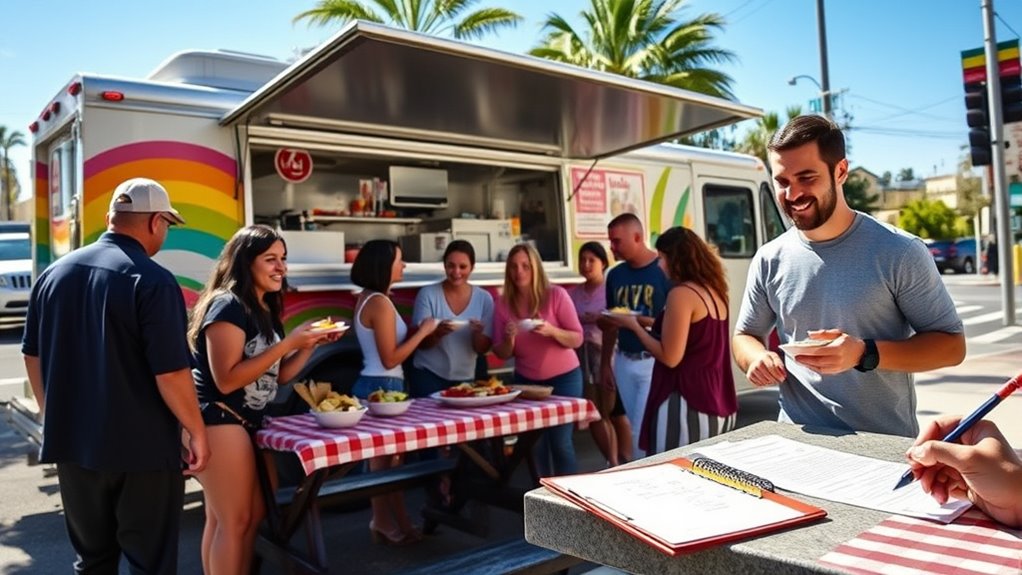
Once you’ve collected feedback from your event, it is vital to analyze the data carefully to identify patterns and key insights. Focus on customer preferences to determine which dishes resonate most and where improvements are needed. Pay attention to comments about ingredient sourcing—whether customers notice freshness or quality issues—that can shape future menu adjustments. Use this table to organize your findings:
| Customer Preferences | Ingredient Sourcing | Areas for Improvement |
|---|---|---|
| Favorite flavors | Freshness concerns | Spicing levels |
| Dietary needs | Ingredient variety | Presentation |
| Portion size | Sourcing consistency | Pricing |
| New dishes liked | Local sourcing | Speed of service |
| Less popular items | Quality consistency | Staff training |
This analysis helps refine your menu, optimize sourcing, and better meet customer expectations. Understanding emotional support during feedback sessions can also foster trust and encourage honest responses from customers. Additionally, considering the nutrient quality of ingredients used can enhance the overall dining experience and customer satisfaction. Incorporating insights about color preservation can also be beneficial for maintaining the visual appeal of your dishes over time. Furthermore, analyzing the performance of equipment used during food preparation can identify areas for operational improvements.
Frequently Asked Questions
How Many Samples Should I Prepare for Each Menu Item?
When determining your sample size for each menu item, aim for enough to gather reliable feedback without waste. Usually, preparing 20-30 samples per item works well, allowing customers to try and give honest opinions. Keep portion control consistent to ensure accurate preferences. Adjust your sample size based on customer flow and feedback, ensuring you collect enough insights to refine your menu without over-preparing or under-serving.
What Permits or Licenses Are Needed for a Taste Test Event?
Imagine you’re opening a new chapter in your food truck adventure. To keep the story smooth, you’ll need to gather your tools first. You should obtain local health permits, ensuring your taste test is safe and compliant. Additionally, secure event permits from your city or county to host the event legally. These steps are your map, guiding you to a successful taste test without any bureaucratic detours.
How Can I Ensure Unbiased Feedback From Participants?
To guarantee unbiased feedback, you should use anonymous surveys and blind testing methods. Keep participants unaware of the specific dishes being tested to prevent preconceived opinions. Use code numbers instead of dish names and avoid revealing the ingredients or presentation details. This way, you get honest, genuine responses, helping you accurately gauge customer preferences and improve your offerings without influence or bias.
What Are Cost-Effective Ways to Promote My Taste Test?
Want to turn your taste test into a viral sensation without spending a fortune? Use social media to create buzz—post eye-catching photos, behind-the-scenes videos, and enticing polls. Don’t forget community outreach; partner with local groups or businesses for free promotion. Word of mouth and local support are priceless, and these strategies won’t break the bank. Remember, sometimes old-school charm beats a hefty marketing budget every time.
How Do I Handle Negative Feedback Constructively?
Handling criticism can feel tough, but it’s a chance to grow. When you receive negative feedback, listen carefully and stay open-minded. Use it as positive reinforcement by identifying areas for improvement rather than taking it personally. Respond politely, thank the person for their input, and show you’re committed to making changes. This attitude not only helps you improve but also builds trust with your customers and supporters.
Conclusion
Now that you’ve planned your menu, picked the perfect spot, and promoted your event, you’re ready to gather valuable feedback. Think of this taste test as a stepping stone, like a spark that ignites your food truck’s success. Use the insights you gain to refine your offerings and grow confidence. With each event, you’ll get better, turning your food truck venture into a well-oiled machine, ready to serve satisfied customers every time.



